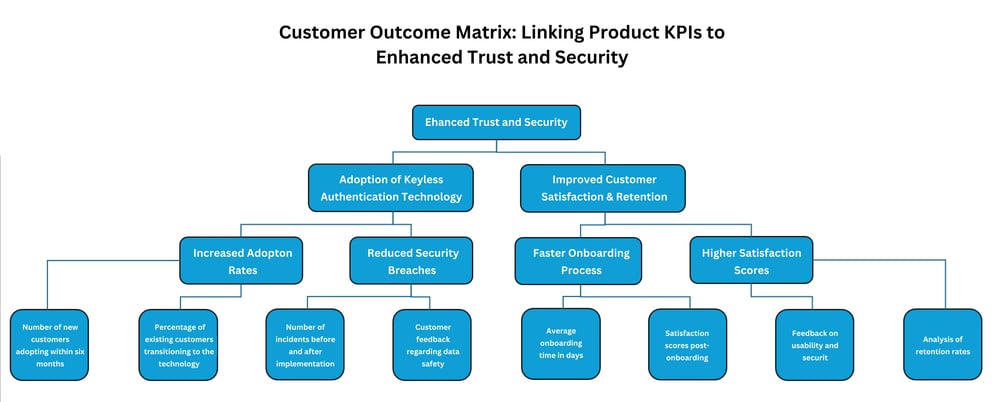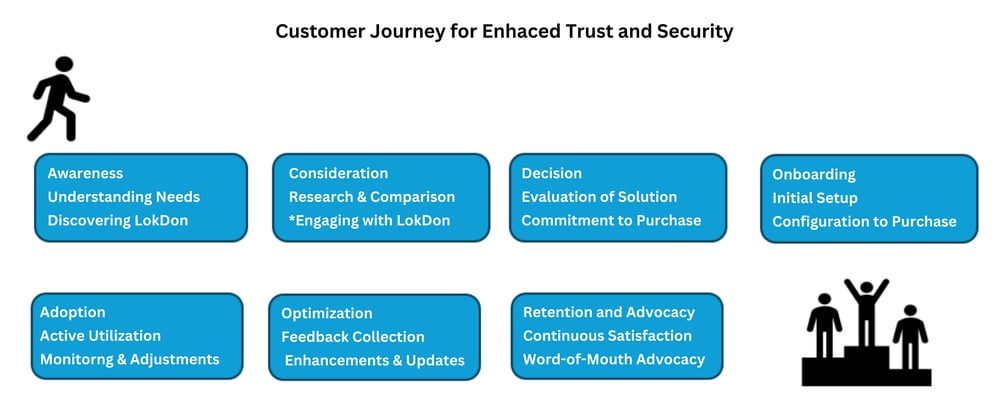
CyberLockX
Case Study: Expansion Strategy for CyberLockX
Business Problem:
CyberLockX faces stagnation in customer acquisition and market share growth despite being in a thriving cybersecurity sector.
Background:
I conducted customer and prospect interviews to identify CyberLockX successful customer-outcome architecture. I facilitated the strategic planning meeting with sales, marketing, and the CEO to reach the conclusion to target small and medium businesses, clarifying their needs to define customer journey and experience that led to building our Product Vision, Strategy, and Roadmap. Backlog management was structured as follows: 30% innovation, 50% iteration, and 20% infrastructure/technical debt.
Product Vision:
AI-driven seamless authentication enhances security and builds trust, improving customer satisfaction and driving business growth.
Product Strategy:
1. Enhance Security and Trust:
o Goal: 30% increase in keyless authentication adoption.
o Tactics: AI anomaly detection and real-time analytics.
2. Personalize Onboarding Experience:
o Goal: 25% reduction in implementation time; 15-point boost in satisfaction.
o Tactics: AI personalization and effective user segmentation.
3. Leverage AI Insights:
o Goal: Generate $1.5 million through upselling.
o Tactics: Collaborate with sales/marketing and use predictive analytics.
4. Launch Security Features:
o Goal: 20% increase in new customer acquisition via two features.
o Tactics: Machine learning analytics and intuitive integration.
Product Roadmap:
• Q1: AI anomaly detection.
• Q2: Redesign onboarding with AI.
• Q3: Integrate AI for engagement.
• Q4: Deploy two new security features.
• Q5: Refine AI models and customer journeys.
Business Outcomes:
• Adoption: 30% growth in keyless authentication.
• New Customers: 20% increase in acquisitions.
• Onboarding Efficiency: 25% faster, 15-point satisfaction increase.
• Revenue Growth: $1.5 million from upselling (18% rise).
Conclusion:
The roadmap effectively aligns product vision with execution to deliver transformative value and achieve organizational goals.
Reflection:
This case highlights the power of data-driven methods and strategic product alignment in driving growth. My leadership in cross-functional collaboration led to measurable business outcomes.



